Natural Area Preservation News
Protecting and restoring Ann Arbor's natural areas and fostering an environmental ethic among its citizens.Volume 21, Number 3
Autumn 2016
Park Focus: Stapp Nature Area
article and photos by Morgan Boyer, Crew Leader
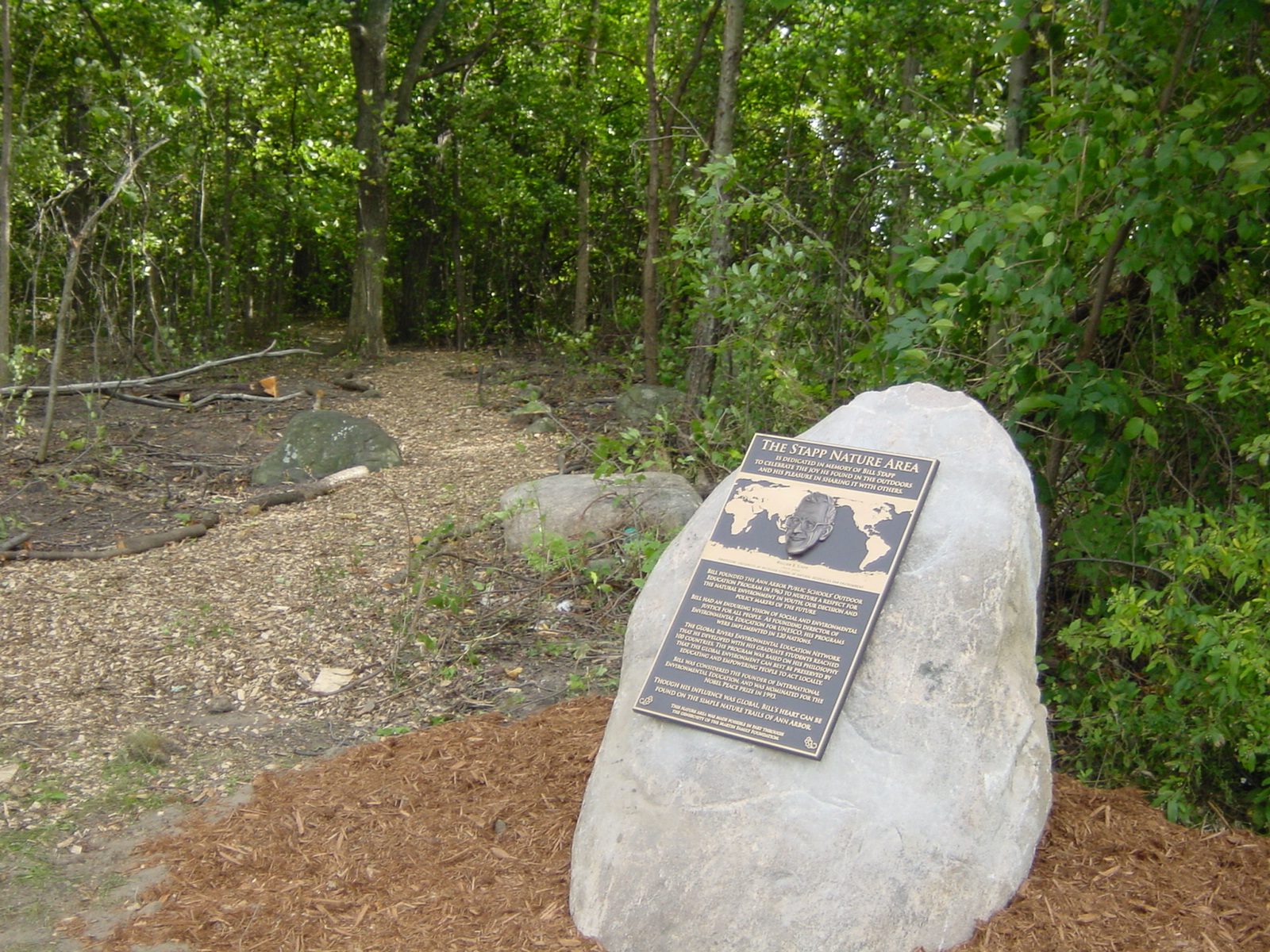 Stapp Nature Area is a true gem hidden
away among Ann Arbor’s busy roads and tall buildings. The park is named in
honor of the late Dr. William B. Stapp, whose global contributions to
environmental education still resonate today through programs such as the
Global Rivers Environmental Education Network, which brings diverse communities
together to explore, maintain and protect river quality.
Stapp Nature Area is a true gem hidden
away among Ann Arbor’s busy roads and tall buildings. The park is named in
honor of the late Dr. William B. Stapp, whose global contributions to
environmental education still resonate today through programs such as the
Global Rivers Environmental Education Network, which brings diverse communities
together to explore, maintain and protect river quality.
Memorial plaque to William B. Stapp, at the entrance to Stapp Nature Area
The park itself is tucked in a corner along
Traverwood Drive and Huron Parkway, nestled between Tuebingen Park and the
Traverwood outpost of the Ann Arbor District Library. Visitors will be
pleasantly surprised to find a small oasis not only for people, but for a
variety of wildlife as well.
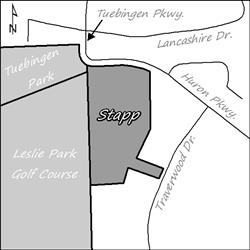
Starting from the trail head located next
to Tuebingen Park, one is met with a small forest brimming with a variety of
mature hickory and oak trees. Looking ahead to autumn, these trees will be
among the last to lose their leaves. Visitors will be able to admire the
spectrum of yellows and reds adorning the canopy while shuffling through the
already fallen leaves of young maples that are chasing the oak trees skyward.
As one moves along the trail, the din of the city becomes muted and is replaced with the sounds of birds singing and small mammals rustling through the brush. The trails have gentle slopes along the north end of the park, but as one ventures southward, the smooth slopes become slightly more challenging, creating a diverse walking experience for any park explorer.
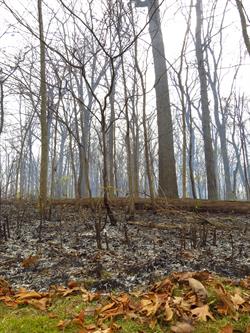 As fall progresses, the local wildlife can
be seen beginning their preparations for winter. Blue jays and fox squirrels
will start forming their caches of food, composed mainly of acorns and other
nuts, buried in the ground or stowed away in the hollows of dead trees.
However, not all of these caches will be consumed, and in the following spring
some of these lost hoards may germinate into a new generation of oaks and
hickories.
As fall progresses, the local wildlife can
be seen beginning their preparations for winter. Blue jays and fox squirrels
will start forming their caches of food, composed mainly of acorns and other
nuts, buried in the ground or stowed away in the hollows of dead trees.
However, not all of these caches will be consumed, and in the following spring
some of these lost hoards may germinate into a new generation of oaks and
hickories.
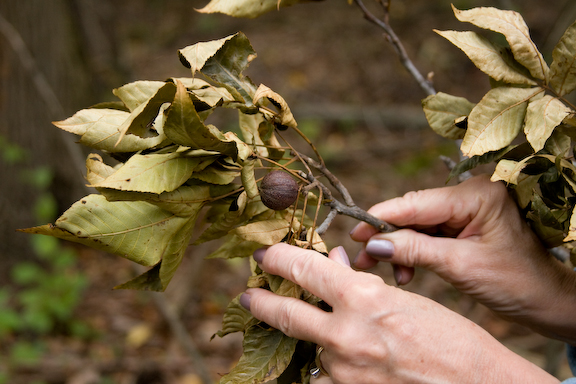 (left) a hickory nut in Stapp Woods, photo by Tom Bethell
(left) a hickory nut in Stapp Woods, photo by Tom Bethell
(right) NAP staff and trained volunteers conduct controlled burns to maintain natural diversity in the park (photo by Michell Yanga).
As temperatures drop, American toads
and chorus frogs will gorge on insects while they last, but eventually will
begin burying themselves in the bottom of the vernal pool in the northeast
corner of the park before the ground freezes. This pool is an important refuge
that is hard to come by for small organisms that cannot move large distances,
so the frogs and toads of Stapp Nature Area eagerly seize upon such a close shelter.
Creatures dwelling within the park
property are not the only ones to benefit from Stapp Nature Area. Birds and
mammals regularly move through the green corridor created by natural areas such
as Leslie Park and Stapp, Black Pond Woods and Dhu Varren Nature Areas, finding
food and habitat within this ecological network. Insectivorous birds in particular
benefit from the forest edge these parks create around Leslie Golf Course, as
they nest within the woods and then fly out to catch insects that might be
bothering golfers.
You can visit this park anytime during
the day to explore and meet its residents, be it the mighty oak tree or the
diminutive downy woodpeckers hopping along its trunk.
For a special experience with this park, join in on a
nature walk that NAP and the Ann Arbor District Library will be hosting on
Thursday, September 8th from 6:30 to 8 p.m. Many different critters are moving around
at this time, so you never know who you will see! If you are looking for more
than a walk in the woods, consider joining the stewardship workday on Saturday,
September 10th from 9 a.m. to noon. where we will be clearing out invasive
species to improve habitat for wildlife and make room for more of the wonderful
native plants you can find at Stapp Nature Area!
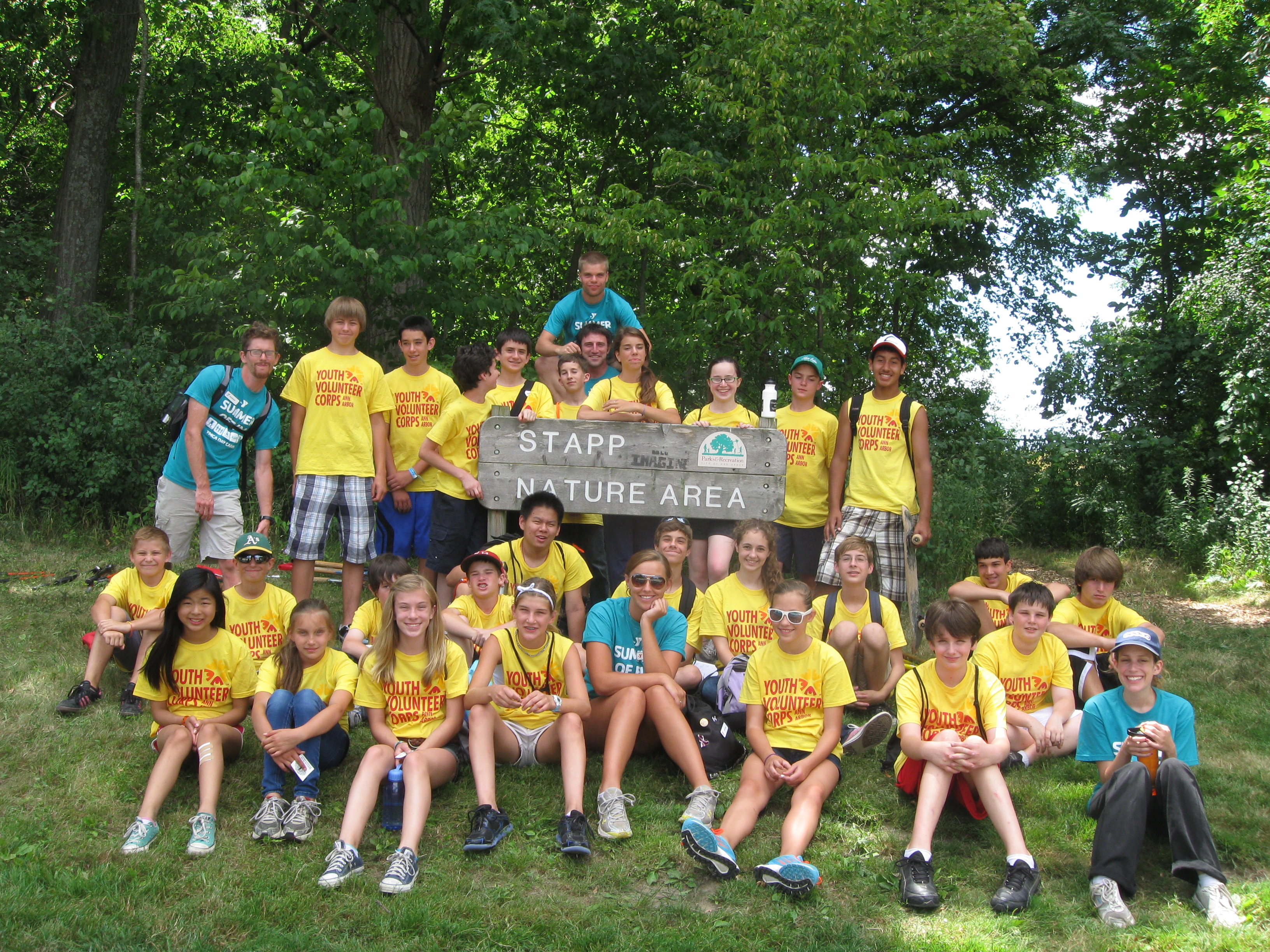
Coordinator’s Corner
by Dave Borneman, Deputy Manager for Volunteerism and Natural Area Preservation
It’s election season. Maybe you’re one of those political junkies who just can’t get enough of the campaigning. Or maybe you’re at the other end of the spectrum and have already had your fill of politics. Regardless of where you fall on this continuum, and regardless of your political leanings, there is still some wisdom, I think, in that directive from President Obama’s recent speech: “Don’t Boo. Vote.”
It makes a lot of sense. If you aren’t content with the current state of affairs, or in the direction things are headed, then participate in the democratic process and help to shape the future.
As I reflect on this, it occurs to me that this is sound advice for all of us, in many different aspects of life. In particular, I’m thinking about those of us who enjoy Ann Arbor’s natural areas. Maybe we’ve appreciated the carpets of spring wildflowers or the cool shade in our forested areas. Or perhaps we’ve enjoyed the splashes of color in our prairies and wetlands from the birds, butterflies, and flowers that inhabit them throughout the summer. Maybe the deafening din of spring peepers is what we most appreciate about our parks. Or maybe it’s the brilliant fall colors that we’re now beginning to see as the seasons turn.
Whatever it is that we most enjoy about our natural areas, we must remember tonot take them for granted. None of these things is guaranteed to be around into the future. Carpets of diverse wildflowers can easily be replaced with monocultures of garlic mustard. There’s still the threat of Rachel Carson’s “silent spring,” if not from DDT, then simply from degradation of the high quality wildlife habitats that currently support our spring peepers and songbirds. Even the brilliant fall colors we all enjoy are not “a given” just because we live in Michigan. We learned that when the Emerald Ash Borer came through and wiped out our beautiful ash trees, which once added their spectacular hues to the palette of fall colors.
This slow decline in many of our natural areas is happening all around us, although typically it doesn’t happen as quickly as we saw with the loss of our entire population of ash trees. You may see it happen in your favorite natural area if you’ve been visiting there for more than just a couple years. It is quite shocking how quickly garlic mustard, or purple loosestrife, or buckthorn can take over an area if left unchecked. Here in our urban environment, with such an abundance of landscaping plants that have escaped cultivation, there is tremendous pressure on our natural areas and the rich biodiversity they possess.
So, what to do about it? Well, we can stand up and boo loudly. Or we can step up and do something about it. We can “vote” on the future state of affairs with our time and our efforts. We can pull weeds and create wildlife habitat to keep our natural areas “natural” and beautiful, and melodious, for future generations to enjoy. I hope you’ll join us.
- Don’t boo. Vote.
Celastrus orbiculatus : A Bittersweet Decoration
by Mike Hahn, Stewardship Specialist
Native to Asia, Oriental (Asian)
bittersweet (Celastrus orbiculatus)
is used in the landscape trade as an ornamental woody vine. It grows quickly
and covers any structure it touches. During the fall you will find it adorned
with bright orange husks, scarlet red seeds, and twining branches. These
decorative and colorful elements are why it is sought after for fall floral
arrangements and wreaths. Unfortunately, discarded decorations are aiding in
the spread of this invasive vine. The seeds do not break down easily in compost
piles and discarded wreaths are often thrown in the back forty, giving this
invasive weed the opportunity to establish and spread.
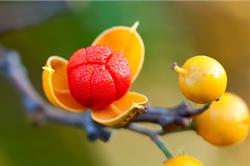
Oriental (Asian) bittersweet first
appeared in the United States in the mid 1800s, but was not identified in
Michigan until the 1970s.
According to the University of Michigan
Herbarium, it has been identified in seventeen counties, with the main populations
located in the southern portion of the state. Once planted as a food source for
wildlife and as a stabilizer for steep embankments, land managers now know that
it causes more harm than good to our natural communities.
Oriental (Asian) bittersweet threatens
Michigan’s native plant community with its sprawling growth, outcompeting native
plants of vital nutrients and sunlight. Due to its aggressive nature, it easily
smothers ground vegetation and twines around trees so tightly that it eventually
girdles them. Even more, the tangled mess of vines taking over its host’s canopy
creates extra weight on the tree, adding additional stress to the branches.
From oak openings to woodland edges, old fields or even prairies, Oriental
bittersweet is versatile in the ecosystem that it thrives, giving it the
opportunity to cause degradation to the many different habitats in our
community.
American bittersweet (Celastrus
scandens), which is native to southeast
Michigan, can easily be confused with the non-native variety. According to the
Forest Invasive Plants Resource Center, the best way to differentiate between
these species is by looking at the location of the flowers or fruits. American
bittersweet flowers and fruits will form at the tips of the branches in a
single clump, while Oriental bittersweet flowers and fruits form where the
leaves join the stem. American bittersweet will typically have larger clusters
of flowers and fruits, as well as larger leaves – almost two times the size of
Oriental bittersweet. Please note that leaf size can be relative and may vary
depending on growing conditions, making flower and fruit locations the most
accurate way to identify between the two species. In the near future, however, it
may become even harder to differentiate between Oriental (Asian) and American
bittersweet due to potential hybridization between the two species.
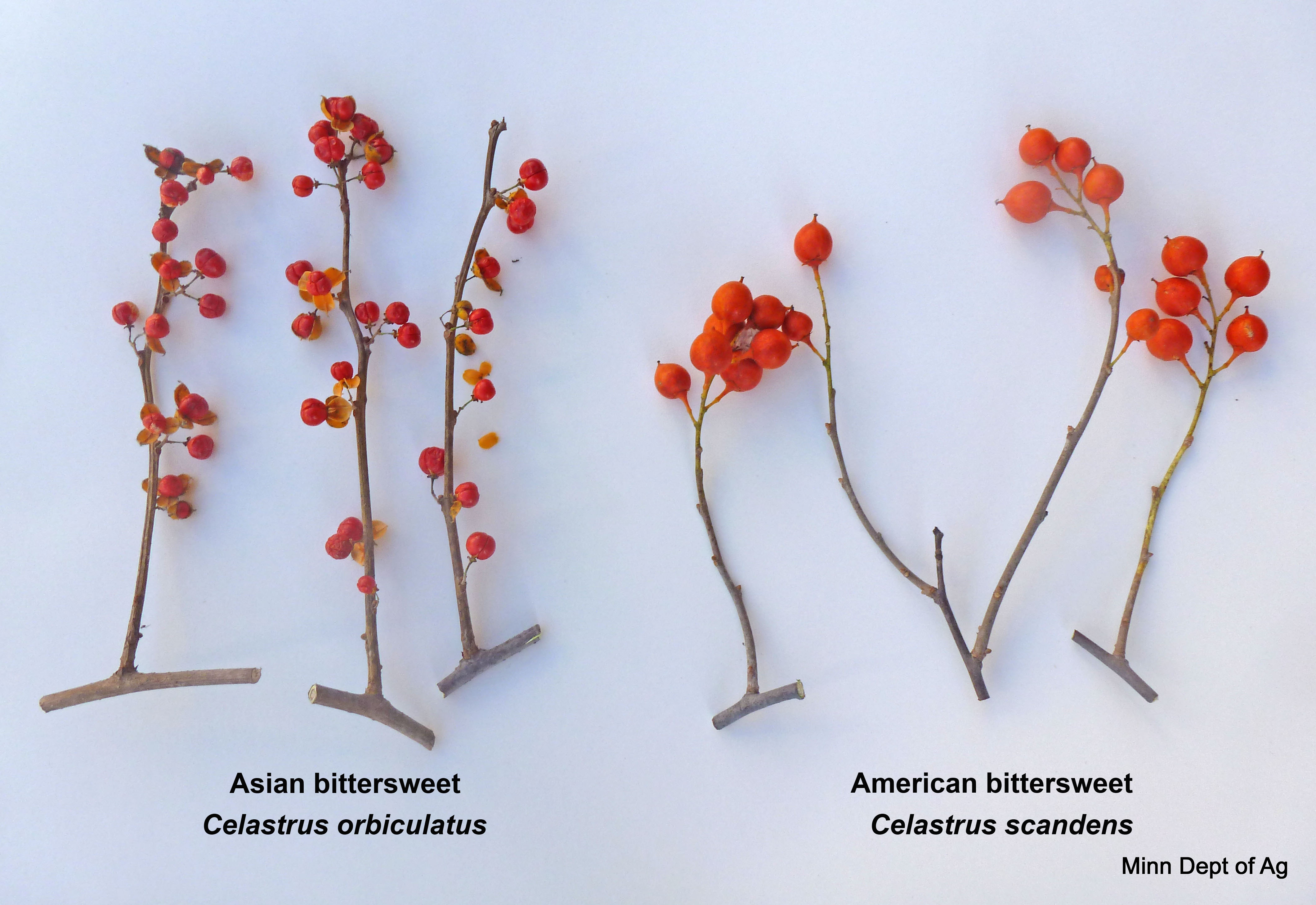
It is easy to see why people are
attracted to using Oriental (Asian) bittersweet in fall arrangements. Between
the brightly colored seeds and the corkscrew branches, it has a unique
appearance. Before buying a wreath this fall, though, think about how that one
decoration is greatly affecting the natural communities here in town. The
Michigan Native Plant Producers Association is a great resource in helping to
find a suitable alternative.
If you purchase decorations made with Oriental (Asian)
bittersweet, please be sure to discard of properly, by burning.
NAPpenings:
Volunteer Appreciation Potluck!
All are invited to our annual celebration of your volunteerism and stewardship! Thursday, October 20, 6:30 to 9:30 p.m. Cobblestone Farm, 2781 Packard Road. RSVP by October 18 to [email protected] or 734.794.6627
Thank You!
Many thanks to the groups who volunteered with NAP recently. We could not make such a difference without you! A2 Active Aging, University of Michigan Xi Psi Phi, Ann Arbor Academy, The North Face, Emerson Middle School, Rudolf Steiner School, Rubicon Genomics, inVentiv Health, Youth Volunteer Corps and Ann Arbor MSU Spartan Alumni Association.
The Stewardship Network Conference
January 13-14, Kellogg Conference Center, Michigan State University, East Lansing
This will be the 10th anniversary of the Science, Practice and Art of Restoring Native Ecosystems conference.
Presenters will cover topics such as environmental justice, traditional ecological knowledge, watershed conservation, and more! See www.stewardshipnetwork.org for more information.
Mayor's Monarch Pledge and Bee City, USA
The City of Ann Arbor is working hard to protect pollinators!  Mayor Taylor has taken the Mayor’s Monarch Pledge, and Ann Arbor has recently become a Bee City USA. By joining these initiatives, the City certifies that it is actively working to protect and restore habitat for the monarch butterfly and other pollinator species. For more on these exciting projects visit nwf.org/mayorsmonarchpledge and beecityusa.org.
Mayor Taylor has taken the Mayor’s Monarch Pledge, and Ann Arbor has recently become a Bee City USA. By joining these initiatives, the City certifies that it is actively working to protect and restore habitat for the monarch butterfly and other pollinator species. For more on these exciting projects visit nwf.org/mayorsmonarchpledge and beecityusa.org.
Staff Updates:
Welcome...
Tanner Bricker - Field Crew
 I’ve been a lifelong nature enthusiast, and I developed a strong passion for conservation while obtaining a biology degree from Central Michigan University. I am thrilled to join the NAP field crew and for the opportunity to combine my passion for ecological restoration with my love of reconnecting people to nature. It is truly an honor to serve the great city of Ann Arbor and to work alongside the vast network of volunteers and park stewards in the area. I look forward to applying my skills toward the improvement of Ann Arbor’s natural areas and learning from the talented team here at NAP.
I’ve been a lifelong nature enthusiast, and I developed a strong passion for conservation while obtaining a biology degree from Central Michigan University. I am thrilled to join the NAP field crew and for the opportunity to combine my passion for ecological restoration with my love of reconnecting people to nature. It is truly an honor to serve the great city of Ann Arbor and to work alongside the vast network of volunteers and park stewards in the area. I look forward to applying my skills toward the improvement of Ann Arbor’s natural areas and learning from the talented team here at NAP.
Madison Roze - Outreach Assistant
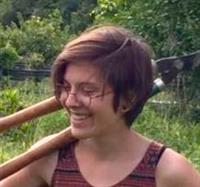 Soon after earning my undergraduate degree in environmental studies from the University of Toledo, I was thrilled to accept the position of Outreach Assistant at NAP. Here, I hope to continue cultivating my lifelong love of ecology and inspire the public to protect and conserve Michigan’s beautiful and diverse natural areas.
Soon after earning my undergraduate degree in environmental studies from the University of Toledo, I was thrilled to accept the position of Outreach Assistant at NAP. Here, I hope to continue cultivating my lifelong love of ecology and inspire the public to protect and conserve Michigan’s beautiful and diverse natural areas.
Congratulations...
Eric Ellis, (NAP Conservation Crew Leader, 2002-04) was recently hired by the Huron-Clinton Metropolitan Authority (HCMA) as the Manager of Natural Resources and Regulatory Compliance.  He will be overseeing the stewardship of 25,000 acres of land in the five county regional parks system serving Livingston, Macomb, Oakland, Washtenaw and Wayne counties. Ellis is replacing the retiring Paul Muelle who worked in this position for many years.
He will be overseeing the stewardship of 25,000 acres of land in the five county regional parks system serving Livingston, Macomb, Oakland, Washtenaw and Wayne counties. Ellis is replacing the retiring Paul Muelle who worked in this position for many years.
